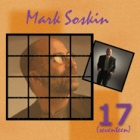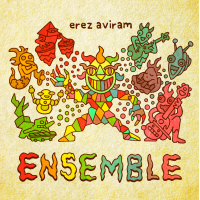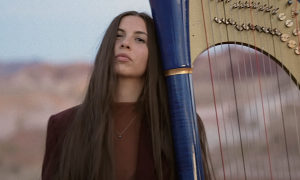Home » Jazz Articles » Interview » Mark Soskin: Creating An Ever-Hopeful Day
Mark Soskin: Creating An Ever-Hopeful Day
 Mark Soskin listened to a litany of great jazz pianists growing up in Brooklyn and attending Colorado State University, where he was pursing classical studies before the jazz influences ushered in a switch to Berklee College of Music in the 1970s. The various styles and approaches to music went into forming his musical personality, as did listening to saxophone players. The result, over the years, has been Soskin's presence as an outstanding pianist offering his skills and sensibilities to a wide array of settings with the likes of Joe Henderson, Randy Brecker, Billy Cobham, Buster Williams, Eddie Henderson, Stanley Turrentine, Herbie Mann, John Abercrombie, Claudio Roditi, Sheila Jordan, Gato Barbieri, "Fathead" Newman, Mark Murphy, Slide Hampton, Bobby Watson and more.
Mark Soskin listened to a litany of great jazz pianists growing up in Brooklyn and attending Colorado State University, where he was pursing classical studies before the jazz influences ushered in a switch to Berklee College of Music in the 1970s. The various styles and approaches to music went into forming his musical personality, as did listening to saxophone players. The result, over the years, has been Soskin's presence as an outstanding pianist offering his skills and sensibilities to a wide array of settings with the likes of Joe Henderson, Randy Brecker, Billy Cobham, Buster Williams, Eddie Henderson, Stanley Turrentine, Herbie Mann, John Abercrombie, Claudio Roditi, Sheila Jordan, Gato Barbieri, "Fathead" Newman, Mark Murphy, Slide Hampton, Bobby Watson and more. But some of Soskin's most memorable listening experiences may have been those of Sonny Rollins. Soskin's most high-profile gig was the 14 years he spent with the saxophone colossus, so there were naturally many special moments. But more than that, he says, were countless moments of extemporaneous Rollins. Woodshed Rollins. Backstage. Behind the curtain. Before the gig. Fly on the wall. Those, too, made an impression.
"He was always practicing," Soskin says of Rollins. "We'd get to a venue and he'd be practicing up until the performance, practically. So often I'd here, from his dressing room, some great solo saxophone playing. It was just great to hear music being played on such a high level—one of the great jazz improvisers ever. Obviously, that crept into my playing. To this day it has. It strengthened a lot of aspects of my playing, which I really appreciated. There's nothing like being on the job, getting all this experience, and it happened to me at a pretty early age. I was very fortunate."
Soskin had moved to San Francisco after leaving Berklee and had already captured the ears of folks way out west, including those of producer Orrin Keepnews, with his impressive style and technique before hooking up with Rollins. Keepnews produced his first solo album, Rhythm Vision (Prestige) and eventually brought him to the attention of Rollins, who was recording for Fantasy. Since those days, Soskin has continued to grow as a player and as a composer. Back in the New York City for more than 25 years, he's been steadily recording and performing with superb musicians on the jazz scene.
But Soskin's playing and musicianship is somewhat under the radar, compared to a lot of the cats getting ink in the jazz media or getting widespread tour support. Be that as it may, a close listen reveals that Soskin is a player of touch, sensibility and imagination. He's in his prime and going strong, and evidence of that is his latest CD on Kind of Blue Records, One Hopeful Day, with some of the city's—and the idiom's—finest musicians. The album of standards and Soskin originals shows not only his piano prowess, but writing and arranging skills. It's as solid a mainstream disk as was released in 2007.
"I'm always working on my stuff and creating new things," says Soskin. "Every chance I get, I'll practice and work on things." The night of this conversation, he was to play a club gig with the vibraphonist Dave Samuels. "That poses a challenge. I like that challenge too. Solo piano, that's another thing I continually work on." Different settings, Different musicians. It's all part of his experience.
Soskin has done ten albums as a leader and a few as co-leader over the years. He had a band with drummer Danny Gottlieb and bassist Chip Jackson, and had another co-led with Harvie S and Joe LaBarbera and Sheila Jordan. For the new disc, he brought in the prodigious talents of Chris Potter on sax, and rounded the rhythm section out with John Patitucci on bass and Bill Stewart on drums. Guitarist John Abercrombie appears on some numbers.
"I had in mind already to do sort of a concept, which would be the music of various piano players. But over the course of time, that kind of morphed. Actually [the label] gave me quite a bit of freedom in choosing the repertoire, as well as the musicians. I had a bunch of different people in mind. As I saw the music coming together, I chose these people for their expertise," Soskin says. "To me, the drums are the most important pick first. If the drums aren't happening, the music will suffer. I definitely had in mind Bill Stewart. The other guys fell into place, really, like utilizing all the sound capabilities as I can."
"Also, my idea for this record was energy. To have a lot of the album have this energetic feel to it. That's what I wanted and it definitely came through on this."
Beginning with driving "On the Street Where You Live," propelled by Stewart, the album takes an interesting voyage. Monk's "Bemsha Swing" is respectful, but takes a path of its own, with Soskin's approach angular, but swinging different than Thelonious, and the rhythmic feel changes up allowing Potter to combine his muscular attack with a funky feel. Chick Corea's "Innerspace" is a highlight, and the title cut, a ballad by Soskin, is deftly executed and exhibits his nice touch with a melody. The pianist's "Strive" is an interesting structure and sows Abercrombie in restrained form, playing flowing single-note runs that flow nicely through the melody and over Patitucci and Stewart's rock-solid support. "Pensativa" gives Soskin a chance to display his solo chops.
Soskin tried to come up with standards "that were not worked on that much by other people, or, if they were, to have something in the tune that I thought would lend itself to me doing something important with the tune—or not even something important, but something I could work with, as far as arranging-wise, the sound, the rest.
"I just start working with a tune to see where it goes. It's actually harder for me to come up with standards, because there's so many of them. How do you limit it to just an album's worth of standards?" He did it successfully, and the group he assembled contributed mightily to the effort. On "Bemsha Swing," for example, "this arrangement of mine came pretty naturally to me, and it also changed a bit in the studio when I brought it to the guys. We didn't rehearse that much. We had a short three-hour rehearsal before the date, so everything was really fresh. We recorded for two days. On the first day, almost all of it was done. 'Bemsha Swing' was one of those tunes that really morphed in the studio, to my delight. On the intro, it's really open. The endings are open. Bill Stewart had these great, interesting cymbals that he used, which was great."
"One Hopeful Day" was written not long before the recording session. "That came out of a 'Blue In Green' idea, maybe something based loosely along those lines. But at the end it goes into this whole different feel and section," the pianist says. "Step Lively" also features Abercrombie in fine form. "I had written it just before the date. I had a few others on hand to do, but that's the one I ultimately chose. It speaks for itself. It's an up, kind of burning tune."
Soskin tinkers with all the standards, pushing "It's Easy to Remember" way out past the way it's usually crooned. In total, the album offers much for the listener on both visceral and cerebral levels.
"I've been messing with all kinds of different formats—duos, trios, quartets—larger things like four horns arranged for a sax quartet. I try to write as much as I can. I have to kick myself a little bit when there isn't a specific project in mind. But it's been a very interesting process that I want to continue and explore further, because you create this whole language with your original compositions," Soskin says reflecting on the process. "I think it makes it even easier for people to recognize who you are with those kinds of original tunes. You create an identity. You also create an improvising identity, because you've written this thing, and now you have to learn how to solo on it. So, often times, I really have to work on that after I close the piece.
"I really love the process of writing music. Usually on my records, they've been almost all originals. This is the first one that had more standards on it. The standards also were pretty rewritten to a certain degree. I like making a standard my own standard. That's important to me. How am I going to tackle something like that? What's going to make it stand out from the crowd? So I usually put some kind of stamp on rewriting a standard."
Soskin started playing the family piano at the age of about seven or eight, and it pulled him in. He took lessons and was involved in the music programs and its different bands during his school years. Music was around in his house. Jazz influences started to creep in during high school. Coltrane's A Love Supreme (Impulse) piqued his interest. He dug deeply into the history of jazz piano: Horace Silver, Herbie Hancock, Bill Evans, Stanley Cowell, Bud Powell, Cedar Walton, Egberto Gismonti, Chick Corea, McCoy Tyner, "and Keith Jarrett, I loved those 70s group and listened to those a lot, when he had Dewey Redman in the band. I listened to a lot of sax players too. I listened to Sonny and Trane, Joe Henderson, Wayne Shorter. I still enjoy listening to all these people to this day."
At Colorado State University, Soskin started off as a language major but played music and took lessons. The switch to becoming a music major was the right move. So was jumping to Berklee.
"At that point, I really got seriously involved in it. A lot of intense practice, a lot of intense playing. Ultimately, I got itchy to be out there playing. I left the school and moved to San Francisco.
"I was fortunate to be out there at a time when things were really happening; this was 1974-81," says Soskin. "The music scene was great. The recording scene. All kinds of music was happening. There were musicians like Tony Williams living there. Joe Henderson was a neighbor of mine; we played together. Fantasy Records was going strong there. I got pretty involved with Fantasy. Orrin Keepnews was the house producer there at the time. I was doing all kinds of local stuff. I played a lot with this group Azteca, which was put together by Pete Escovedo and his daughter Sheila, who became Sheila E. That was a great Latin jazz group, and that got me involved with a whole bunch of different people and also playing Latin jazz, which I still love to this day."
Keepnews brought him to Sonny Rollins.
"That was one of the great experiences of my musical career. It happened to last for about 14 years. It was a long great gig. That was really my heavy schooling, I'd say. It was just a joy to be playing with Sonny for all that time. We did a whole bunch of records together, traveled all over the world. I was treated very well as a jazz musician—the best.
"That was very important. Even before then, my name was getting out there via the Bay area. That's what led Orrin Keepnews to hook me up with Sonny, because Orrin had been checking me out for some years. Of course, if you're on such a high-profile gig as Sonny, people are going to have their ears perk up. And that's a fortunate thing, which, I must say, doesn't exist so much today. There aren't too many people left like Sonny, or even those kinds of bands. At one time, Sonny and people of his generation would play in New York for months at a club. That's how a lot of those great groups got to play such great music. Thelonious Monk and Miles. Today it's a different scene, so it's a bit harder to get your thing going and keep bands happening. I was definitely fortunate to be in that situation where it was really high-profile."
Since the days with Rollins, Soskin has remained busy, playing, composing and teaching at the Manhattan School of Music. "I did a duo record a while back called Five Lands (Cinqueterra) Different Duos (TCB). That was with five different people doing two tunes of mine apiece. That was Joe Locke, Walt Weiskopf, Erik Friedlander on cello, Harvey S and Abercrombie. I did a quintet record not that long ago called 17 (TCB), with Tim Hagans, Billy Drewes, Jay Anderson and Matt Wilson. I've managed to record fairly consistently and with different labels."
The changes in the music industry—major labels losing interest, the collapse of Tower records, independent labels, artist-owned labels, the Internet—all has had its effect on Soskin, like everyone else. Like most talented artists, he's been able to come through it.
"Is it hard? You always have to keep pushing artistically and out there in the business of the music world. You have to keep being out there. It's definitely important to have a fresh recording every now and then ... There's all of these changes, but I've been fortunate to stay on the scene and keep recording and keep performing. Hopefully, that will keep going on."
Soskin continues to listen to his idols, as well as keep up with younger players that are on the scene. But he won't stand still, and his mind moves to other projects, even while the current recording is on the shelf.
"What I'd like to do some time in the near future is something larger, a larger orchestration. Whatever that is going to be, I'd like to mess around with some different instrumentation. Now I'm thinking a larger scenario for me. Keep exploring arranging possibilities, sound, extras. I'm always looking to challenge myself, that's for sure.
"I have to keep things fresh. To me, I look for, thrive on, the challenge. I like having projects that really kick me to come up with some new stuff. That's important to me. Not just what came before. I'm always looking toward the future with that."
Selected Discography
Mark Soskin, One Hopeful Day (Kind of Blue, 2007)
Soskin McCaslin Gisler'n'Hammer, One (TCB, 2006)
Mark Soskin, Homage to Sonny Rollins (White Foundation, 2003)
Mark Soskin, 17 (Seventeen) (TCB, 2001)
Roseanna Vitro, Conviction: Thoughts of Bill Evans (A Records, 2001)
Mark Soskin, Five Lands (Cinqueterra) Different Duos (TCB, 1998)
Sonny Rollins, Here's to the People (Milestone, 1991)
Herbie Mann, Caminho de Casa (Chesky, 1990)
Sonny Rollins, Falling in Love with Jazz (Milestone, 1989)
Sonny Rollins, G-Man (Milestone, 1986)
Mark Soskin, Rhythm Vision (Prestige, 1979)
Sonny Rollins, Don't Stop the Carnival (Milestone, 1978)
Billy Cobham, Alivemutherforya (Columbia, 1977)
Photo Credits
All photos: Courtesy of Mark Soskin
Tags
PREVIOUS / NEXT
Support All About Jazz
 All About Jazz has been a pillar of jazz since 1995, championing it as an art form and, more importantly, supporting the musicians who make it. Our enduring commitment has made "AAJ" one of the most culturally important websites of its kind, read by hundreds of thousands of fans, musicians and industry figures every month.
All About Jazz has been a pillar of jazz since 1995, championing it as an art form and, more importantly, supporting the musicians who make it. Our enduring commitment has made "AAJ" one of the most culturally important websites of its kind, read by hundreds of thousands of fans, musicians and industry figures every month.





























